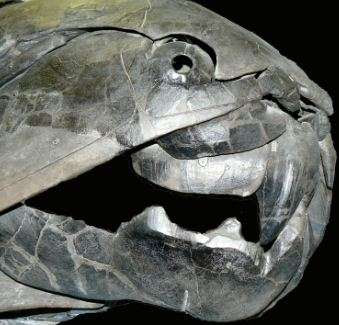
A new theory suggests depletion of trace elements in the oceans was a factor in three major mass extinction events in the past 600 million years, according to new research led by Flinders University’s Professor John Long.
While some of these events around the five mass extinction events in this timeframe have been well studied, such as the killer asteroid that wiped out the dinosaurs 66 million years ago, others are more enigmatic and entertain a variety of possible causes, according to the Flinders Strategic Professor in Palaeontology.
“Although there are other explanations to be considered, the possibility that the severe depletion of trace elements in the oceans was a factor in these extinctions has never been put forward before. The implications are vital for understanding our planet’s future,” says Professor Long.
“Without adequate supplies of trace element nutrients in our seas, life can go extinct.
“We need to better understand the cycles of oceanic nutrients to make sure such events do not occur in the future.”
The groundbreaking research, published in the journal Gondwana Research this month, shows that three of the major mass extinction events may have been caused by severe depletion of trace elements necessary for life in the Earth’s oceans.
Using a new data set of trace element abundances compiled by the University of Tasmania (UTAS), the research team discovered that selenium and other trace elements reached critical low points at the end of the Ordovician period (c.455 million years ago), at the end of the Devonian period (about 359-370 million years ago) and at the end of the Triassic period (about 200 million years ago).
“This research offers a plausible new scenario for how these devastating mass extinction events might have developed,” Professor Long says.
The research was carried out by developing a new set of analyses using more than 1800 marine rock samples taken from around the globe, spanning the past 3.5 billion years and measuring extremely low levels of trace element abundance with great accuracy.
“Our research team at UTAS have used laser analytical techniques to measure selenium concentrations in marine pyrite, which has grown on the ocean floors over the last 600 million years,” says co-author of the study Professor Ross Large, from the University of Tasmania.
“Trace elements like zinc, selenium, copper, cobalt, manganese and selenium, in particular, are required for life in doses that have a very specific tolerance range. Too much or too little selenium can be toxic,” says Professor Large.
“Today’s oceans contain about 155 ppt of selenium in their surface waters, changing slightly with depth. Tolerance levels of selenium are known for phytoplankton, molluscs, fish, and many land animals and plants.
“Critically low levels of selenium in past oceans would have affected the survival of plankton, eventually leading to collapse of the food chains, and extinctions.”
Note: The above post is reprinted from materials provided by Flinders University.










